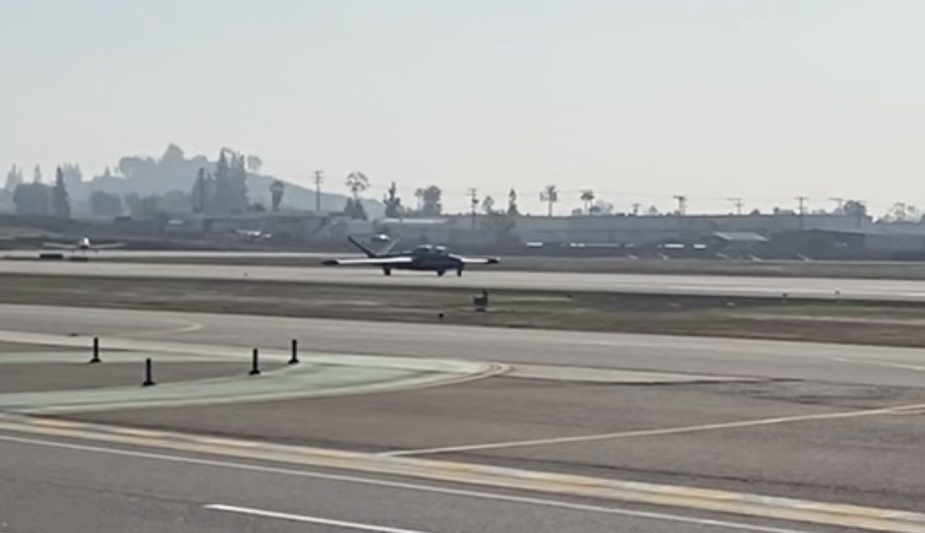I remember seeing 4 Magisters parked at Gallway in the early 90s. The Irish Air Corps used them.
Probably a “hey this looks fast” fashion during a particular era 
A very loud Fouga Magister was seen doing some flying at my base this weekend  Wish I’d got a photo of it in the break, it’s very elegant with long wing and V-tail, whistling on closed throttle at high angle of bank. All I got was a little phone video, from which I extracted this photo of the takeoff roll.
Wish I’d got a photo of it in the break, it’s very elegant with long wing and V-tail, whistling on closed throttle at high angle of bank. All I got was a little phone video, from which I extracted this photo of the takeoff roll.

The initial angle of climb, like other trainer jets of its era, was visibly horrible. Hope the neighbors enjoyed the noise on the upwind!
#ruddervator
#stabilator
mh wrote:
Correct, and it has been defined already. No need to change. Same with the all flying elevator of the Archer. If you’re not using terms correctly, you won’t be understood.
I’m always pepared to learn more. Please point me to this definition.
I note that the Oxford Aviation Academy’s ATPL manual states: “The vertical surface(s), vertical stabiliser or fin, generate sideways forces as required.”
I would certainly call that a vertical stabiliser
Of course it is exactly that, functionally. The plane would be out of control within seconds without it.
That’s a matter of definition, I guess.
Correct, and it has been defined already. No need to change. Same with the all flying elevator of the Archer. If you’re not using terms correctly, you won’t be understood.
I read somewhere that while skin drag is the same (same total wetted tail area as a normal 3-surface tail), the speed advantage comes from slightly lower interference drag due to fewer joins between the surfaces and the empennage.
Then everything else isn’t equal, and the conventional aircraft has better (higher) stability margins due to the added drag. This can in turn be “fixed” by decreasing the tail area of the conventional design, or increasing the area of the V-tail.
mh wrote:
Yes, the 1050 has no vertical stabiliser, only a rudder. You can see it pretty well in the picture on Wikipedia.
That’s a matter of definition, I guess. I would certainly call that a vertical stabiliser even the whole thing can move — just as I would say that a Cherokee has a horizontal stabiliser even though the entire thing also serves as elevator.
Yes, the F33A short Bonanza with normal tail needs the yaw damper as well. The rear seat passengers noted it when I turned it off – I didn’t notice anything.
That is in line with comments above. Still, wikipedia says that “V-tailed aircraft require longer rear fuselages than aircraft with conventional empennages to prevent yawing. (citation needed [sic])”
What amazes me is that V-tails flies the same and performs the same (or slightly better). I would have expected different stall behaviour also but have not read anything about that. I guess it is impossible to have a stall condition with all of the tail/ruddervators in the wake of the stalled wing, as some of it will always be in the undisturbed air above and/or below the wake and maintain effectiveness.
I read somewhere that while skin drag is the same (same total wetted tail area as a normal 3-surface tail), the speed advantage comes from slightly lower interference drag due to fewer joins between the surfaces and the empennage.